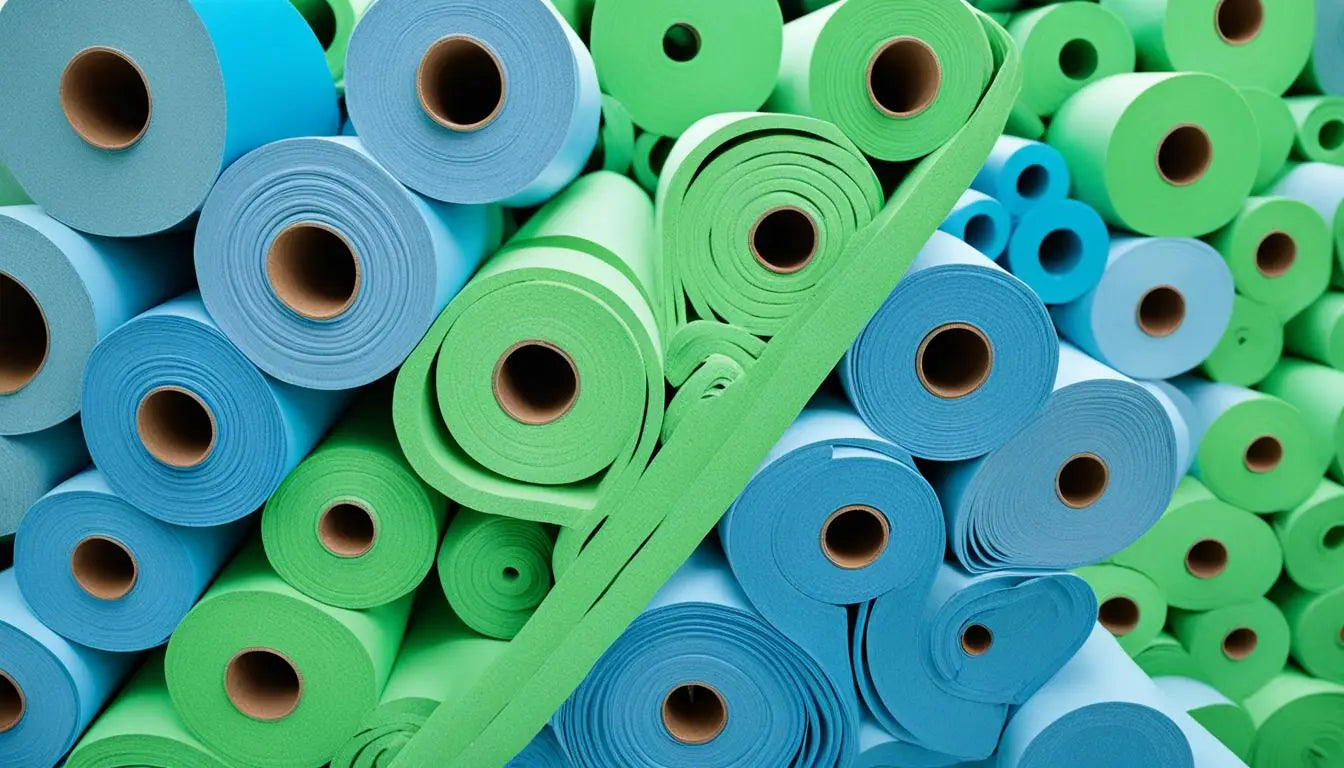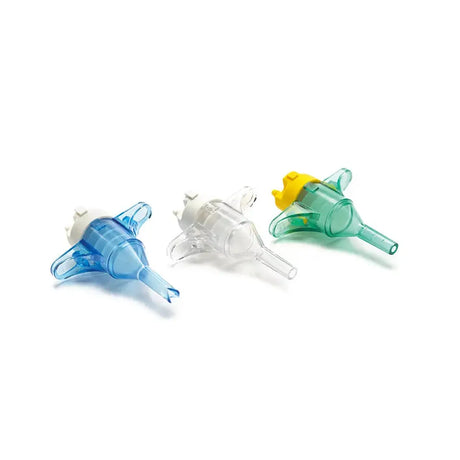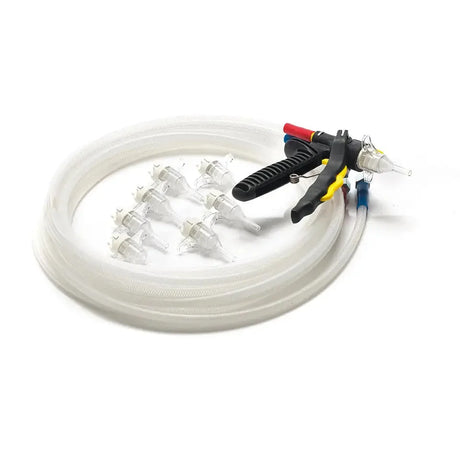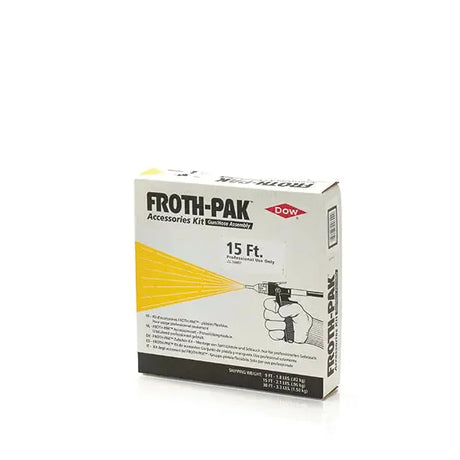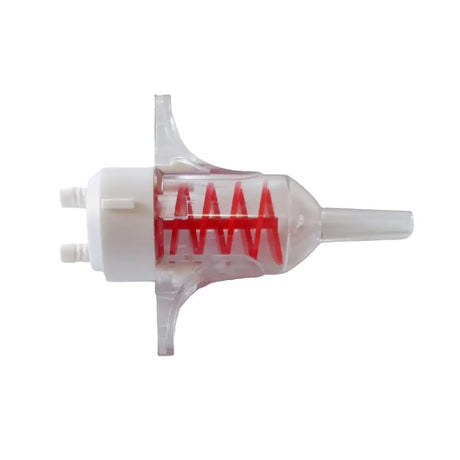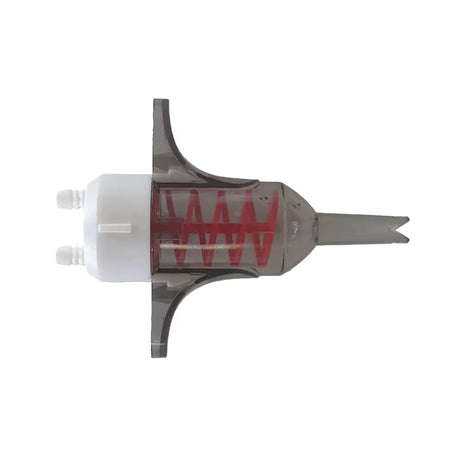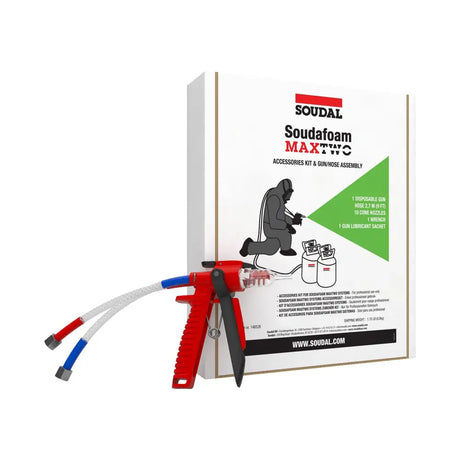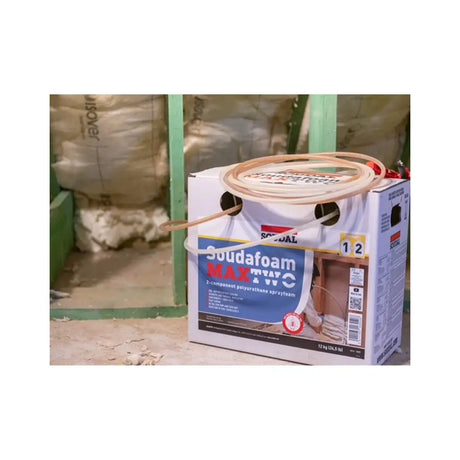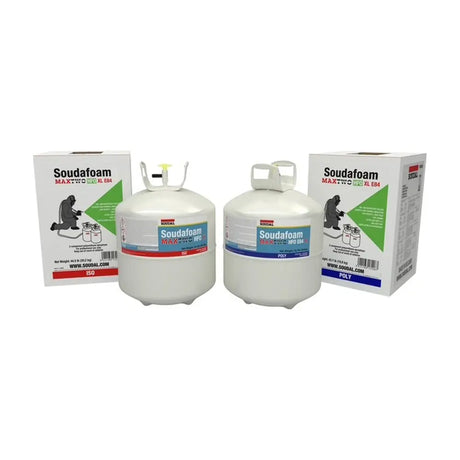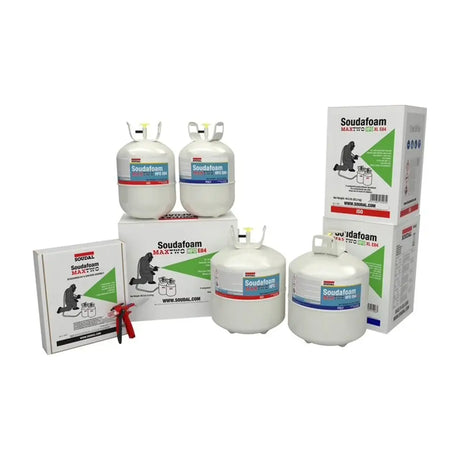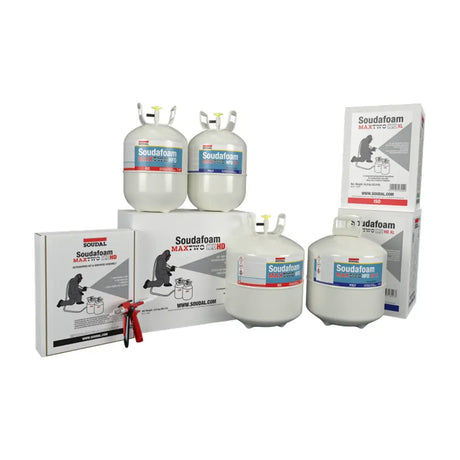In the world of industrial applications, elastomeric foam stands out. It started gaining attention in the 1950s. Since then, it has grown to meet both thermal and noise control needs in construction1. This insulation balances heat control with sound absorption. It transforms how HVAC systems are insulated, increasing energy efficiency and indoor air quality1.
Top elastomeric foam suppliers now produce greener products1. They have removed harmful chemicals like CFCs and HFCs. This change supports better indoor air quality and environmental health. These products are ideal for many mechanical systems, thanks to their eco-friendly qualities1.
Key Takeaways
- Closed cell elastomeric foam has revolutionised industrial insulation since the 1950s1.
- Demand for this insulation has escalated due to its positive impact on energy efficiency and IAQ1.
- Elastomeric foam is engineered without harmful chemicals, aligning with the sustainability ethos1.
- This insulation material's moisture resistance makes it optimal for environments where condensation is prevalent1.
- The acoustic properties of elastomeric foam contribute to a quieter and more comfortable industrial setting1.
The Evolution and Production of Elastomeric Foam Insulation
The journey of elastomeric foam insulation has shaped modern building. It started early and grew sophisticated over time. Now, it's key for saving energy in construction.
History of Elastomeric Foam and Its Rise in the Construction Industry
Elastomeric foam was discovered and stood out for its unique traits. It became crucial in construction for its thermal and sound insulation. With a focus on energy-saving buildings, its use has grown fast.
Manufacturing Process: From Raw Material to Insulation Product
The manufacturing of elastomeric foam includes strict quality checks. It must meet standards like ISO 137872. The process involves blending, extrusion, and heating to create its strong, insulating structure.
KAIMANN's Innovative Granulate Technology and Its Impact on Quality
KAIMANN's granulate technology has improved elastomeric foam quality significantly. It ensures consistent product quality. This advancement supports modern infrastructure's energy efficiency goals.
These advances are valued in the construction industry as they improve sustainability and performance. Techniques like KAIMANN's show a commitment to innovation and excellence.
| Temperature | Thermal Conductivity (W/m∙K) | European Standard Compliance | Water Vapor Diffusion Resistance Factor (μ) | Equivalent Air Layer Thickness (m) |
|---|---|---|---|---|
| -30°C | 0.0333 | EN 14304:2009 +A1:20133 | 70003 | 42 (for 6 mm) |
| -10°C | 0.0343 | Within 10% of declared value2 | 63 (for 9 mm) | |
| 0°C | 0.0353 | 91 (for 13 mm) | ||
| +20°C | 0.0373 | 133 (for 19 mm) | ||
| +40°C | 0.0383 | 175 (for 25 mm) | ||
| +70°C | 0.0403 | 224 (for 32 mm) | ||
| Mean of 10°C | No exceeding 0.0503 | 280 (for 40 mm) |
Understanding the Unique Characteristics of Elastomeric Foam Insulation
Elastomeric foam insulation has become key in the industrial world. It's known for its excellent thermal management and moisture control. It's efficient and eco-friendly, fitting well in various systems.
https://www.youtube.com/watch?v=sLYmLRqa4ME
Low Thermal Conductivity and High Energy Efficiency
This insulation is praised for its low heat transfer feature.4 This means better temperature control in systems41. It's been a top choice for nearly 70 years in the USA for cold pipes, especially in refrigeration and HVAC systems4.
Built-In Vapor Retarder and Its Role in Moisture Control
Elastomeric foam has a built-in barrier against moisture. This prevents water build-up and fights corrosion in cold systems4. It's better at resisting moisture than other materials, making it highly valued1.
Adhesives and tapes work with this vapor barrier to make the insulation stronger. They stop moisture, guaranteeing durability and effective moisture management4.
The Flexibility Advantage Over Rigid Insulation Options
Its flexibility stands out against stiff insulation types. It wraps easily around complex structures5. This makes the installation tight and efficient in keeping the temperature controlled. Rubber foams, such as elastomeric, are also durable and resist wear and tear5.
Moreover, being free of fibres, it's ideal for keeping air clean.4 It's the go-to for ensuring air quality and safety in indoor areas, fitting various insulation needs well1.
In summary, elastomeric foam's thermal and moisture control, along with its flexibility, make it excellent. Its many benefits make it perfect for various uses. It leads the way in providing effective and green insulation solutions.
Comparing Closed Cell Elastomeric Foam to Fiberglass Insulation
In the world of industrial insulation, there's a big talk about whether to use closed cell elastomeric foam or fiberglass insulation. Each material plays an important role. They have special features that affect how well thermal systems work in different industrial uses.
Why Closed Cell Structure Matters for Industrial Applications
Closed cell elastomeric foam is very important for industrial uses because of its closed cell structure. This structure stops moisture from getting in, which reduces the risk of corrosion under insulation (CUI). This is a big problem in industrial settings. Meanwhile, fiberglass insulation, having an open cell structure, may absorb moisture. This can make insulation less effective and increase the risk of CUI6.
Tackling Corrosion Under Insulation (CUI) with Elastomeric Solutions
CUI is a hidden danger to industrial infrastructure's durability and safety. To fight this problem, closed cell elastomeric foam is used because it resists moisture. This foam's structure also keeps thermal performance steady and cuts down energy loss. So, it stands strong against traditional fiberglass insulation when protecting against CUI in industrial settings6.
- Closed cell elastomeric foam is known for its thermal and acoustic insulation benefits. It's reliable in stopping energy loss and meets various Sound Transmission Class (STC) needs for different assemblies6.
- In extreme conditions, closed cell elastomeric foam does better than fiberglass because it has a higher melting point. This makes it more fire-resistant, which is key for industrial safety6.
- There are also differences in how you install them, due to how stiff or flexible mineral wool and fiberglass are. This affects what installers prefer to use6.
| Insulation Type | R-Value at 3.5 inches | Common Applications | Handling Characteristics |
|---|---|---|---|
| Mineral Wool Batt (TempControl®) | R-15 | Exterior walls, Basements, Heated crawl spaces | More rigid, can be heavier |
| Fiberglass Batts | R-13 | Interior/Exterior walls, Basements, Garages, Attics | Flexible, installer preference |
Closed cell elastomeric foam insulation is not just good at keeping heat in. It also plays a key role in protecting industrial insulation systems from moisture and fire. These benefits match the growing need for insulation that can handle tough industrial conditions. This is seen in the foam insulation market's expected growth to US$ 60.7 Billion by 20347.
Elastomeric Foam Applications in HVAC Systems
Elastomeric foam is key for boosting energy efficiency in heating systems and cooling systems. It's famous for its insulation, reducing energy loss and making systems work better. Today, it shows our move towards saving energy and cutting costs.
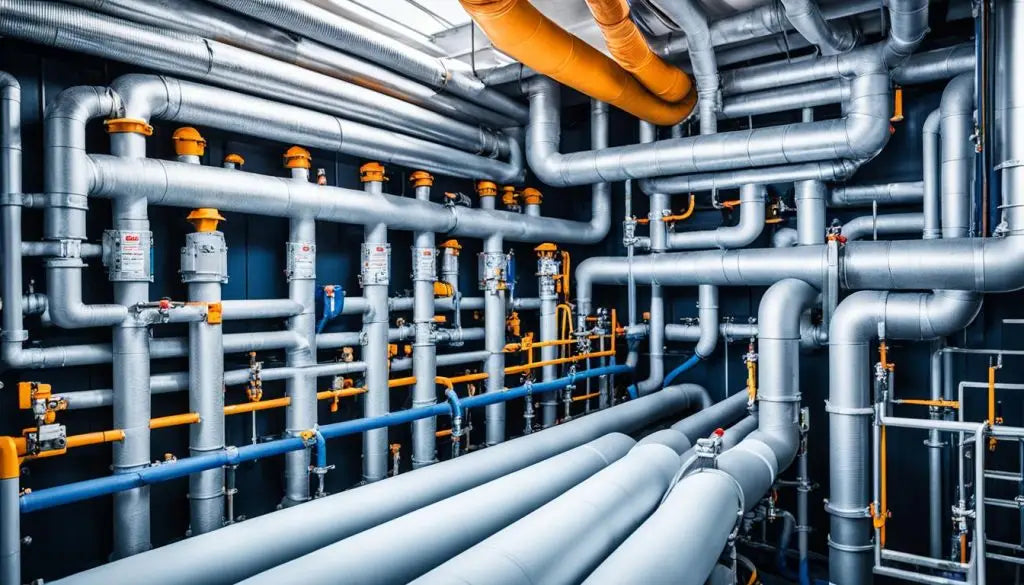
Optimising Energy Efficiency in Heating and Cooling Infrastructures
In HVAC systems, handling extreme temperatures is crucial. Elastomeric foam is perfect for this, blocking unwanted heat flow. It stops heat from entering cooling systems and keeps it in heating systems. This lowers energy use and saves money.
It keeps temperatures steady, easing the workload on HVAC units. This makes them last longer and saves more energy.
Elastomeric foam insulation is great at keeping temperatures right. This is vital for energy efficiency in big buildings. It cuts down on energy use, making heating and cooling systems work better. The drive for better energy use in HVAC systems is well-supported by elastomeric foam.
Using elastomeric foam in HVAC is all about improving energy efficiency, durability, and performance. It's a smart choice for modern buildings.
Industrial Applications of Elastomeric Foam
Elastomeric foam insulation has been key in industry since the 1950s1. It meets the high demands of today's industrial systems. This includes VRF systems, crucial for good climate control. Elastomeric foam has also been adapted for extreme settings like cryogenic and high temperatures.
VRF Systems and Their Special Insulation Needs
VRF systems are essential for modern climate solutions and need good insulation for top efficiency1. Elastomeric foam is top choice here, preventing thermal issues. It's easy to use and helps keep temperatures consistent, which also betters indoor air quality1.
Insulation Challenges in Cryogenic and High-Temperature Environments
For extreme heat or cold, elastomeric foam insulation is crucial1. New non-halogen foams can handle up to 300ºF, marking a big tech step. Its moisture resistance and flexibility make it ideal for various industries facing extreme temperatures1.
Interest in elastomeric foam has spiked with more focus on air quality over twenty years, especially in Asia Pacific89. The shift towards non-formaldehyde, low-VOC foam shows its wide-ranging industrial appeal8. Firms like Armacell and Kaimann GmbH have been key in this growth, pushing its use in many areas89.
The COVID-19 pandemic impacted production, but the elastomeric foam market has remained strong. This shows the industry's commitment to tackling present and future insulation challenges8.
Contributions to Fire Safety and Acoustic Properties
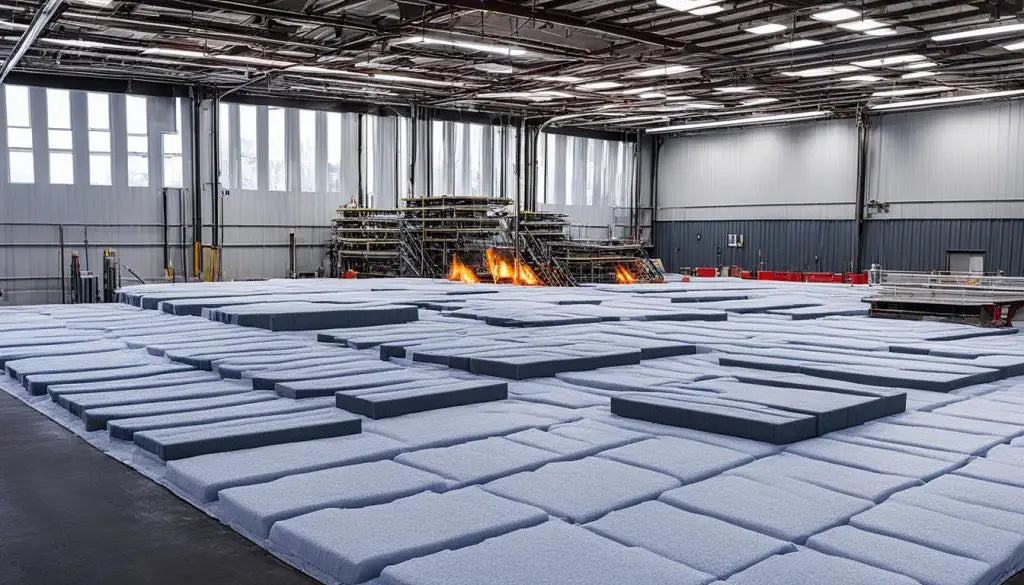
Elastomeric foam insulation combines fire safety with noise reduction. This is key today when industries need both safety and quiet. The material meets tough regulatory requirements. It ensures buildings are safe and sound.
Meeting Regulatory Requirements While Enhancing Safety
Fire safety is crucial in construction and manufacturing. Elastomeric foam insulation meets strict fire standards, reducing fire hazard risks. It is vital in areas with high heat and fire risks. It helps machines operate safely without raising temperature concerns.
Implementing Elastomeric Foam for Superior Sound Absorption
The acoustic properties of elastomeric foam insulation help lower noise. It's great at sound absorption. This is valuable in industries where machinery noise is a problem. Sound comfort improves well-being and work output.
The dual perks of elastomeric foam insulation are fire safety and noise reduction. Its usage is essential in modern industry. It meets regulatory requirements and improves life quality at work.
Spotlight on Insulation Thickness and Its Effect on Performance
Insulation thickness plays a key role in industrial success. It's vital for insulation performance in various industrial applications. Getting the optimal thickness calculation right is essential. It ensures insulation meets industry standards and the unique needs of energy-saving buildings.
Considering diverse industrial needs is crucial when assessing insulation. Factors include temperature changes, types and sizes of pipes and equipment, and humidity levels. This approach helps choose insulation that works well and is cost-effective.
New insulation materials like spray polyurethane foam (SPF) have changed the game. SPF is light, adding barely any weight, yet it's durable. It can last about 50 years if looked after well10. SPF's various types offer different benefits. This makes choosing the right thickness a fine skill, especially for roofing10.
Installing advanced insulation calls for skilled people. The Spray Polyurethane Foam Alliance Professional Certification Program is growing. It trains experts to handle these complex jobs across the country10. These professionals learn from SPFA's guides. They help with checking roofs before SPF goes on and choosing the right SPF products10.
Calculating Optimal Insulation Thickness for Different Industrial Scenarios
Each industrial case has its own challenges. Finding the right insulation thickness is key. The solution must be just right, balancing performance with costs.
SPF sticks well to many surfaces like clay, metal, and wood10. Storage and weather also affect it. For best results, store SPF chemicals at the recommended temperatures10.
In industrial applications, materials like cork stand out. Cork is sustainable and resists heat and chemicals well. This makes it great for insulation performance11. In the UK, detailed guidelines and regulations ensure buildings meet requirements. This followed rule changes in December 2022 for external wall construction12.
Modern industry focuses on matching products with new technologies. Tools like U-value and WUFI software are backed by expert advice. They help with predicting energy performance and moisture movement12.
The discussion about insulation thickness is complex but vital. It involves sustainability, tech use, and keeping up with standards. Striking the right balance here is key for a future where industry and environmental care go hand in hand.
The Significance of Proper Insulation Adhesives and Tapes
Industrial insulation systems need good quality components to last and work well. Insulation adhesives and tapes are vital, protecting the system from issues like moisture and loss of heat. Let's explore how these materials impact the system and what guides their choice in the industry.
Ensuring Integrity and Longevity in Industrial Insulation Systems
Insulation adhesives bond layers of insulation together, even in tough conditions. Insulation tapes seal gaps to stop moisture from getting in. If moisture gets in, it could cause the insulation to deteriorate.
Choosing the right adhesives and tapes is crucial. They must handle changing temperatures and harsh environments. This makes them key to keeping insulation effective for a long time.
| Characteristic | Insulation Adhesives | Insulation Tapes |
|---|---|---|
| Moisture Resistance | High | Essential |
| Thermal Stability | Must tolerate extreme temperatures | Must perform consistently across temperature ranges |
| Adhesive Strength | Robust under various conditions | N/A |
| Sealing Efficiency | Provides solid initial bonding | Ensures lasting seals over time |
| Application Ease | Should enable swift and safe application | Designed for user-friendly application and repositioning |
Knowing the materials well and choosing the best adhesives and tapes is essential. It's a sign of good planning and execution in today's industrial work. It shows the industry's high standards.
Elasticity and Durability: Elastomeric Foam in Diverse Environmental Conditions
Elastomeric foam insulation is a top choice in many fields. It's known for its great elasticity and durability. These qualities are key for its use in cars, planes, packing, health care, and building5. This foam is also UV resistant and fights off microbes, making it great for different environments.
Naturally Resistant to UV and Microbial Growth
This foam is made to resist harsh UV rays and keep its quality over time5. It stops microbes from growing, which makes living areas healthier. It lasts longer even in different weathers with little need for upkeep5.
Sustainability Factor: A PVC-Free Insulation Solution
Environmental worries led to PVC-free insulation options. Elastomeric foam insulation is part of this green shift13. It helps save energy without sacrificing quality. It's a smart choice for those who care about the planet.
| Material | Elasticity | Durability | UV Resistance | Microbial Resistance | Sustainability |
|---|---|---|---|---|---|
| Elastomeric foam | High | Superior | Excellent | Excellent | PVC-Free |
| Other insulations | Variable | Standard | Moderate | Moderate | Often contains PVC |
In conclusion, elastomeric foam insulation is about performance, toughness, and being green. From its start in 1914 as rubber sponge5, it proves to last and aims for a future where being green and working well go hand in hand52.
Conclusion
Elastomeric foam insulation plays a crucial role in various industries. It's known for its low thermal conduct and great insulation ability, confirmed by ISO 84972 standards. The construction sector in North America and Europe greatly benefits from it, thanks to their focus on green practices14.
This insulation not only saves energy but also boosts fire safety and soundproofing. To enjoy these perks, correct installation and the right thickness are key. The Asia Pacific region, especially China and India, is quickly becoming a big market for this insulation. Latin America, the Middle East, and Africa are also seeing growth14.
Companies like Kingspan Group and Owens Corning are expanding their reach. They're doing this through big investments and buying other firms14. Thanks to ongoing improvements and precise tests, elastomeric foam insulation remains top choice where energy saving, fire safety, and noise reduction matter.
FAQ
What are the unique characteristics of elastomeric foam insulation?
It has low thermal conductivity and a built-in vapor retarder. It also offers flexibility, which is an advantage over rigid insulation.
How does elastomeric foam insulation compare to fiberglass insulation?
Elastomeric foam has a closed cell structure for better insulation and moisture resistance. Unlike the open cells in fiberglass, this prevents moisture from getting in.
Where is elastomeric foam insulation commonly used in industrial applications?
It's widely used in HVAC and VRF systems. It also suits cryogenic or high-temperature conditions well.
What are the contributions of elastomeric foam insulation to fire safety and acoustic properties?
It meets fire safety standards and enhances sound absorption. This boosts both safety and acoustic comfort.
How does insulation thickness affect the performance of elastomeric foam insulation in industrial applications?
The thickness of the insulation is key to its performance. Optimal thickness is vital for the best insulation in industrial settings.
What is the significance of proper insulation adhesives and tapes?
The right adhesives and tapes keep industrial insulation systems working well. They stop moisture and keep insulation effective.
How does elastomeric foam insulation perform in diverse environmental conditions?
It's very flexible and durable, even in different environments. It resists UV rays and microbes, and helps in making buildings sustainable by being PVC-free.
Source Links
- https://insulation.org/io/articles/insulation-materials-closed-cell-elastomeric-foam/
- https://www.ncbi.nlm.nih.gov/pmc/articles/PMC11012858/
- https://www.fridgespareswholesale.ie/sites/www.fridgespareswholesale.ie/files/union_foam_technical-memo_0.pdf
- https://aeroflexusa.com/elastomeric-foam-insulation/
- https://www.mdpi.com/2073-4360/13/10/1565
- https://www.jm.com/en/blog/2021/march/head-to-head--mineral-wool-vs--fiberglass-/
- https://www.futuremarketinsights.com/reports/foam-insulation-market
- https://www.alliedmarketresearch.com/elastomeric-foam-market-A11805
- https://www.mordorintelligence.com/industry-reports/flexible-elastomeric-foam-market
- https://www.roofingcontractor.com/articles/90040-proper-installation-of-spray-foam
- https://amorimcorkcomposites.com/en/search/?q=materia&tag=materia
- https://files.proctorgroup.com/assets/brochures/proctors-modular-and-offsite-solutions.pdf
- https://www.globaleee.com/global-news/-history/elastomers-rubbers-difference
- https://www.fortunebusinessinsights.com/oem-insulation-market-106859

